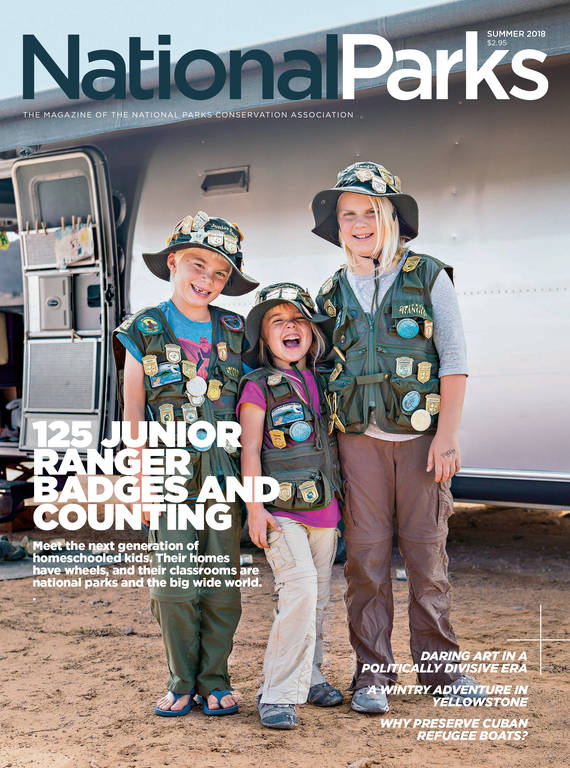Summer 2018
Lessons in Motion
Homeschooling on the road isn’t always easy, but enthusiasts say the big wide world — including national parks — is the best classroom.
The Curren family home is bright, airy and decorated with the trappings of a happy middle-class American household — pretty photos, colorful throw pillows, plants, an inviting bowl of fruit. National park magnets adorn the fridge, and there’s even a designated spot for the yoga mat. But this house is atypical. For one, it’s a grand total of 188 square feet. It also has wheels.
Jess and Sam Curren, along with their three children, Cara, 8, Andrew, 10, and Rachel, 12, live on the road most of the time, completely untethered from the standard-issue suburban existence they once maintained in Lehi, Utah. Their 27-foot Airstream serves as kitchen, bathroom, bedroom, office and — when they’re not out exploring — a schoolhouse, too.
The inspiration for the Currens’ drastic lifestyle change arose in 2012, when the family, self-described outdoorsy adventurers, embarked on a five-week trip to California. On their way home, they were surprised to notice that they didn’t feel particularly homesick, and they didn’t miss the neighborhood barbecues, the home-improvement projects or shuttling between activities. They started to dream of a more nomadic life, shorter on possessions but richer in experiences.
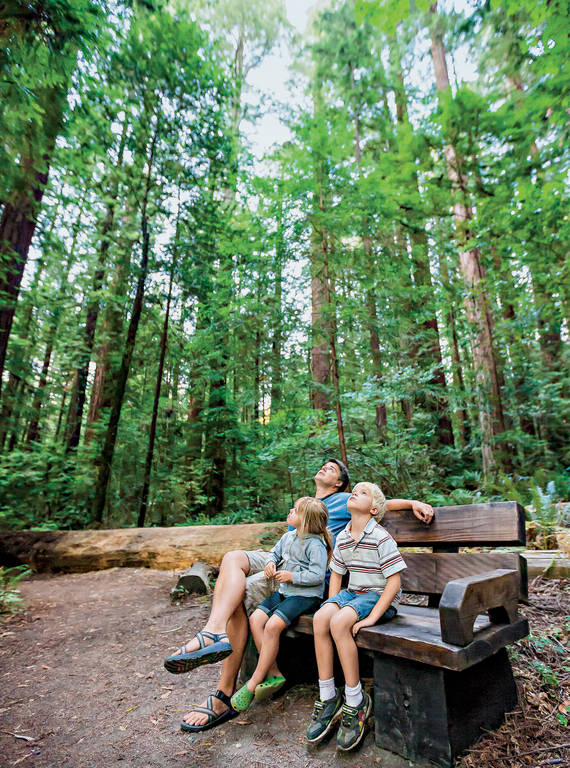
“I realized how beneficial travel would be to me as an adult, not simply for the kids,” said Sam Curren, shown here with two of his kids in California’s Redwood National and State Parks.
© JESS CURRENIt wasn’t such a far-fetched idea. Both parents have a thirst for adventure and portable jobs. Sam, 38, works as a computer programmer and Jess, 34, as a freelance photographer and blogger. After experimenting with a house swap the following year, they purchased the Airstream and a truck, sold their five-bedroom home, jettisoned almost everything they owned and hit the road.
The Currens were motivated primarily by the desire to spend more time with one another, but they also wanted to educate their children in a different way. “A lot of education at this age is just opening their eyes and giving them a taste that all of this is out there,” Jess said. “That’s what’s most important to me and my kids — love of learning and exploring and being a well-rounded individual.”
Letting go of the norms of conventional education proved to be a process, however. At first, the Currens felt compelled to follow a traditional curriculum while traveling. “I remember one time I was trying to encourage the kids to get their workbooks done so we could go explore the national park,” Sam said. “Then I thought, ‘This is dumb. We should be maximizing our time exploring, not reading about it in some workbook.’” Now, while the kids still do some sit-down lessons and homework, the family mainly uses the real world as their classroom, visiting science museums, historic sites, state parks and national parks as they pinball from coast to coast.
“This is what I craved for so long without knowing what it was,” Jess wrote on her blog, CurrentlyWandering.com, in September 2015, nearly two years after embracing life on the road. “Freedom from social norms, free to be who we were meant to be without social pressure. Free from soccer schedules, school schedules and even work schedules. We dictate our time and how we spend it, rather than having it handed to us. This is freedom. I love it.”
A growing number of American families are taking the idea of homeschooling and adding wheels in a phenomenon known as roadschooling. “The growth in this lifestyle choice has been exponential and continues to be exponential,” said Kimberly Travaglino, the founder of Fulltime Families, an organization that connects roadschooling families through a website, app and rallies. Since 2010, the organization has ballooned to more than 2,000 members, and Travaglino, who roadschools her own four children in a 42-foot recreational vehicle, estimates there are thousands more who are currently traveling the United States.
At one time, families living on the road — pipeline workers, entertainers or seasonal workers — chose the lifestyle for employment-related reasons. Broader social acceptance of homeschooling, widespread availability of Wi-Fi and the rising number of remote jobs have made the choice attractive to a wider demographic. Now, telecommuting professionals are opting for a peripatetic existence as a way to see the world and offer their kids a freer, more hands-on education.
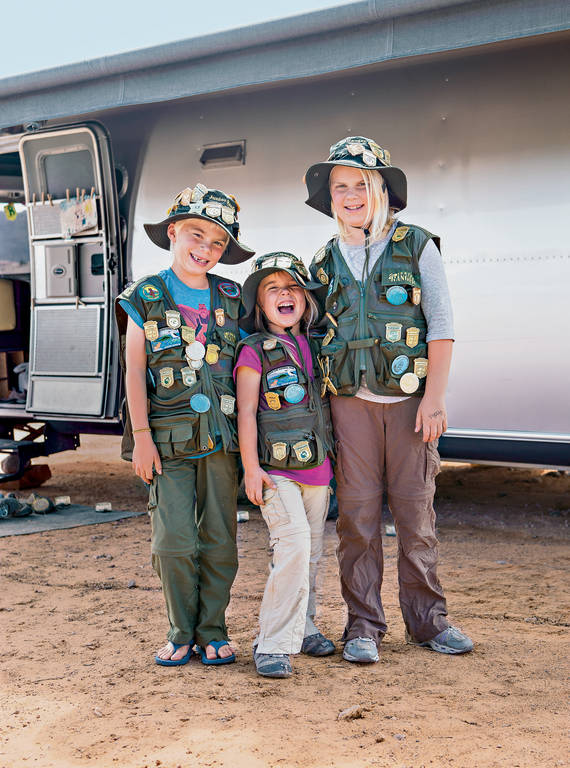
Andrew, Cara and Rachel Curren, pictured in Moab, Utah, have so far amassed 125 junior ranger badges on their roadschool adventures.
© JESS CURREN“What happens is a number of people stop, they look at their lives and they say, ‘What are we doing?’” said Brian Ray, founder and president of the National Home Education Research Institute, who estimates that roadschooling started taking off about 10 years ago. “They’re interested in a way of life in which the education of children and life are integrated. School is not something you do separate from life. Learning is a part of life.”
Roadschoolers have different ways of structuring their travels. Some live full-time on the road while others take extended trips from a home base. They’ll typically spend anywhere from a few days to several weeks exploring a particular region, attending events and stopping at museums, parks and roadside attractions before moving on. Most spend a considerable amount of time in national parks, not only because they’re spectacular, but because they provide rich material for science and social studies courses. In 2015, for example, the Currens devised a unit on Native American history and hit eight parks in Arizona, from Montezuma Castle National Monument to Walnut Canyon National Monument.
Almost all the national parks offer resources for teachers and homeschoolers, from ideas for day trip activities to videos, lesson plans and webchats with rangers. “We have a lot of families who indicate they use our online resources like our ‘Nature Notes’ videos to learn more about the park before they come,” said Jamie Richards, spokesperson for Yosemite National Park. “Then when they get here, you see a lot of youth who are fully engaged and ask great questions.” Yosemite is one of a few parks with an education department that offers field trips for visiting classes and remote learning programs via webinars. At some park sites, rangers will meet with roadschooling families who call in advance and are traveling during low-traffic times.
“Boy, that’s memorable when you get a personal tour, and you get to see behind the scenes,” said Dee Young, a Kansas-based roadschooling mother who, with her son Barrett, met then-Director of the National Park Service Jonathan Jarvis and then-Secretary of the Interior Sally Jewell on a trip to Washington, D.C. (The superintendent at Fort Scott National Historic Site in Kansas, where the family had volunteered, helped make this unusual meeting possible.)
Almost all parks also offer junior ranger programs in which kids complete a series of activities, take an oath to protect and continue learning about the parks and receive a badge or certificate. The Curren children have amassed 125 badges so far at sites ranging from New Orleans Jazz National Historical Park to Channel Islands National Park in California.
Other kids, such as Marie Young, have become almost obsessed with the junior ranger program. Marie, an outgoing 13-year-old from Texas, has taken four national park trips of about two weeks with her mom, Kate Woodward Young. On these long adventures, as well as many shorter trips, they have visited about 200 park sites while amassing 175 junior ranger badges — and Marie is gunning for more.
“The junior ranger programs are something I can do to learn about the park without having to sit through boring tours or read all the signs,” she said. “I’d rather have a fun way, and the booklet kind of sums up what I need to know about the park.” Now an expert, she wrote the junior ranger booklet for Waco Mammoth National Monument in Texas, where she volunteers. She frequently helps at the junior ranger booth, providing information and encouraging other kids to participate in the program. She is emphatic about how her park experiences might help her later on.
“I think it’s especially going to help me through college,” she said. “If I have to take any history courses, I’ll for sure ace them.”
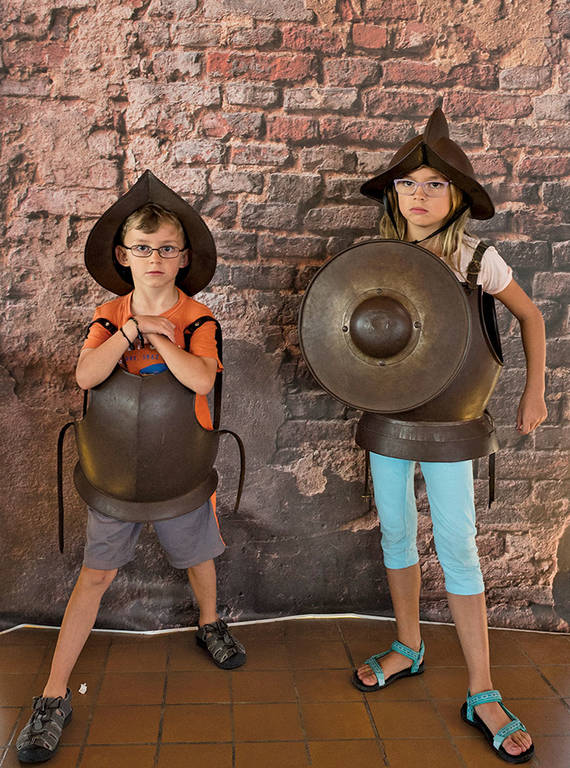
Peter and Emelie Lindstrom at Cabrillo National Monument in California.
© STAFFAN LINDSTROMPeople choose roadschooling for diverse reasons, but of the dozen families interviewed for this story, many were concerned about trends in public education, including the growing use of standardized testing and increased emphasis on math and English at the expense of social studies and the arts. They wanted a more kid-led, real-world, hiking-boots-on-the-ground education for their children and were in a position to make it happen.
“Rather than reading about things in a book, we could go and touch and be there and talk to park rangers who know all about it,” said Christine Lindstrom, who is living in an RV with her husband, Staffan, and three children. “We thought what a gift that type of education could be for our kids.”
Other families make the pedagogical choice to accommodate their kids’ special needs. Dee Young said Barrett’s struggles with learning challenges prompted her to choose roadschooling. Barrett never went to public school and never missed it. He particularly loves living-history demonstrations, in which rangers dress up in period garb, so throughout elementary, middle and high school, he and his mom road-tripped to many national park sites. (Barrett’s father made this financially possible by staying behind to work.) Now Barrett is studying at Pittsburg State University in Kansas and hopes to become a living-history interpreter himself.
For some parents, the decision to roadschool has just as much to do with their preferences — or regrets about their own education. “As a kid, I never had a lot of time to experience things and be myself,” said Karen Milde, a marketing consultant from Vancouver, Canada, who has started to take her small children on national park road trips in the Pacific Northwest. “I was always boxed in to doing piano or going to Chinese class or dance class.”
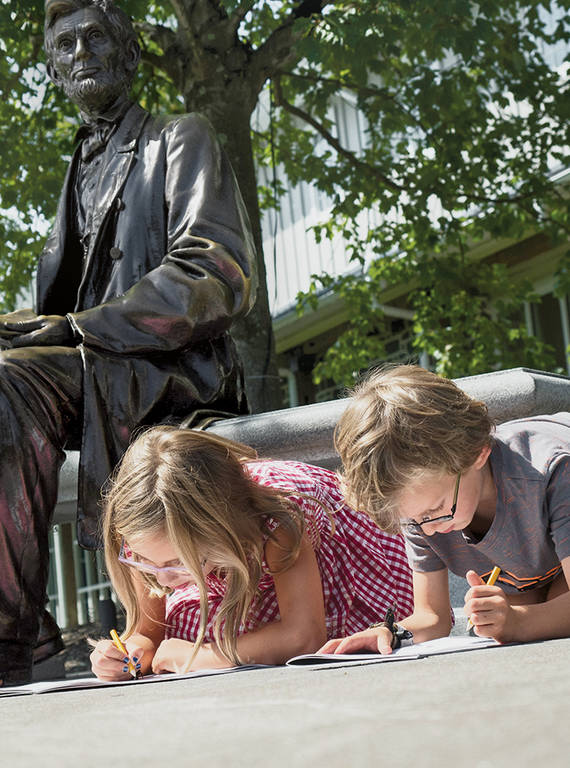
Emelie and Peter working on junior ranger booklets at Pennsylvania’s Gettysburg National Military Park.
© STAFFAN LINDSTROMMany adults are pleased to discover just how much they are learning while roadschooling. At Manassas National Battlefield Park in Virginia, for example, Sam Curren had an aha moment in the rolling fields where the Confederate and Union armies clashed. “I was standing where it actually happened, and I was able to connect to history in a way I had never been able to before,” he said. “That was a moment — and we’ve had lots of those — when I realized how beneficial travel would be to me as an adult, not simply for the kids.”
Although the Curren children spend a lot of time together and with their parents, they each cultivate their own interests. “I’m pretty sure I’m the only kid in this family who actually likes hiking,” said Andrew, the 10-year-old, with a laugh. He fondly remembers visiting Wizard Island in Oregon’s Crater Lake National Park when he was 6 and sledding down the dunes at White Sands National Monument in New Mexico. Rachel, 12, loved seeing the jagged Canadian Rockies. She excels at writing and math and particularly loves baking. And Cara, the youngest, has an abundance of energy and is what Sam calls “our silly imagination girl,” coming up with creative games and play.
Even with an unusual lifestyle, the Currens have fallen into a rhythm. Sam wakes up at 5:30 a.m. to work. The kids wake up a bit later and do math and writing homework in the mornings four days a week before heading out to explore. Jess was a wedding and family photographer before the trip; now she chronicles the family’s adventures on her blog, which brings in a small supplemental income from outdoor brands. The family typically camps in one place for anywhere from two to 10 nights and rarely drives more than three hours to the next camping spot. Although they don’t often stay in cities, which aren’t easy to navigate in an Airstream, they will venture into urban areas to visit science museums, zoos and aquariums. Occasionally, they’ll do what they call “boondocking”: They find a remote location way out on Bureau of Land Management land and camp off-grid for a while, sometimes with other roadschooling families they’ve met on their travels. In the evenings, the kids read on their Kindles, listen to audiobooks or play Minecraft, a video game. They are allowed two hours of screen time each week in half-hour increments — but know they can get away with more when their parents are sitting around the campfire with friends.
LIVE VICARIOUSLY
In general, roadschoolers abide by the same regulations as homeschoolers. Conveniently, the Currens’ home state of Utah doesn’t require them to submit test scores or curricula of any kind. Eleven states, including Idaho, Texas and Connecticut, require virtually nothing from homeschooling parents, whereas others, such as Pennsylvania and Vermont, ask parent educators to submit lesson plans, standardized test scores and even professional evaluations. Depending on their state’s requirements, some homeschoolers and roadschoolers skip traditional subjects that their kids aren’t interested in — trigonometry, for example — a practice that irks critics, who contend that those students are at risk of getting an incomplete education. Critics also commonly say that homeschooled children lack opportunities for socialization, a characterization that roadschooling families refute.
“I feel like they get a lot more socialization and interactions than you do when you’re in school,” said Jennifer Jones, a mom based in Marble Falls, Texas, who has homeschooled and roadschooled her eight children. “Socially, the kids are around all different ages of people and backgrounds instead of fitting in a class with all the same people who are all the same age.”
Sometimes strangers will pipe up with criticism. The Travaglino family has encountered people who believe they’re irresponsible for not giving their children their own bedrooms or that they’re “living off the government.” “Not true at all,” said Kimberly Travaglino. “People sometimes just can’t wrap their heads around this.” They’ve also met people who have offered them food, thinking that they travel because they’re homeless and destitute.
Perhaps the most vociferous critics of roadschoolers, however, are concerned family members. “When we started, my parents were not on board,” said Jess Curren. “They were like, ‘You are going to ruin your kids. They’re going to need therapy.’”
Despite the criticism, the community has continued to grow and evolve. The Currens, who eventually won their parents’ support, maintain a robust network of traveling families on Instagram. Travaglino runs a roadschooling Facebook page with 11,000 followers and a coaching business for roadschooling newcomers. Fulltime Families has an app that connects families on the road and hosts rallies in large campgrounds with as many as 80 clans who gather to play games, take seminars and house tours, and attend dances and socials.

National Parks
You can read this and other stories about history, nature, culture, art, conservation, travel, science and more in National Parks magazine. Your tax-deductible membership donation of $25 or more entitles…
See more ›For some, this lifestyle also has a natural lifespan as kids become teenagers and seek more independence. Last year, the Currens started to feel that even their unconventional life had become routine and started daydreaming about the next challenge. That fall, Sam took a post as a visiting professor of computer science at Brigham Young University-Hawaii for four months. “At first, I cried every night,” said Jess. The kids also missed traveling, but soon the family grew to love their new routine. They decided it would be good to have a home base and stable community and bought a condo in Driggs, Idaho. They plan to live there when it’s snowy — and squeeze in a lot of skiing, as they did last winter — then rent it out the rest of the year while they travel.
“Investing more of our resources into adventure instead of possessions will continue,” Sam said. “As our kids grow up, we’ll adapt here and there to be able to fit their needs. If they need to be mostly still, we’ll make it happen. But I highly suspect that when our kids go to college and their friends ask, where are your parents? They’ll say, ‘I don’t know, let me check Instagram!’”
About the author
-
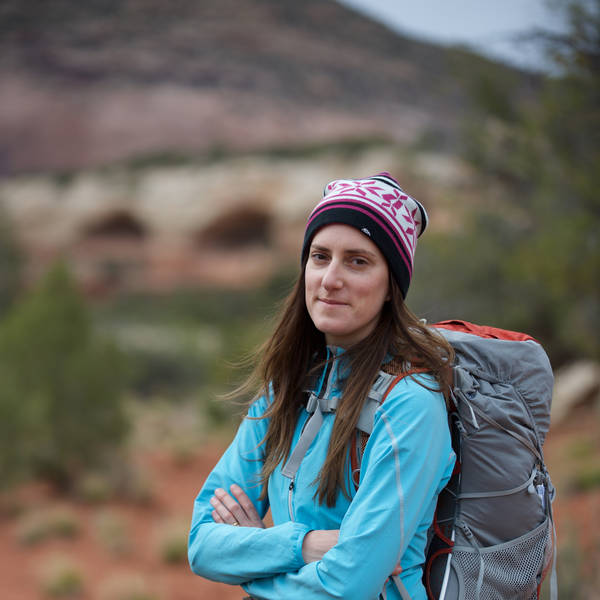 Kate Siber Contributor
Kate Siber ContributorKate Siber, a freelance writer and correspondent for Outside magazine, is based in Durango, Colorado. Her writing has appeared in National Geographic Traveler and The New York Times. She is also the author of “National Parks of the U.S.A.,” a best-selling children’s book.
